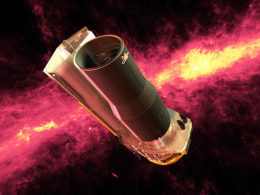Dr. Judy Pipher first joined AAS Journals in 2002 as an ApJ editor. In the 17 years she’s served as editor since then, Judy has seen the journals undergo significant transitions. When journal topical corridors were first introduced in 2016, her expertise made her the natural choice for Lead Editor for the Interstellar Matter (ISM) and the Local Universe corridor.
The ISM and the Local Universe corridor includes articles related to stars and the medium between them, both in our own Milky Way and in nearby galaxies. Topics that fall under Judy’s purview encompass a rich diversity: everything from molecular clouds to protoplanetary disks, from star clusters to spiral arms, studied both theoretically and observationally across all wavelengths of light.
Looking Ahead
What are the big things that Judy sees on the horizon for the field of ISM and the local universe?
Observations from the Atacama Large Millimeter/submillimeter Array continue to revolutionize our understanding of how planets form in the disks of dust and gas that surround young stars.
Another area of active research involves the relative roles of magnetic fields and turbulence in the molecular clouds that eventually collapse to form stars. Observatories around the world — from the submillimeter capabilities of JCMT or SMA to the polarization measurements enabled by the flying observatory SOFIA — are studying how these two components dictate the process of star formation, and we seem right on the brink of finally figuring it out. “I think we’re almost at the point where the effects of turbulence and the magnetic fields at a variety of stages can be put together in a very interesting way,” says Judy.
Developing a New Field
Judy’s own career is centered around the development of infrared detectors — essential tools for studying the hidden, dusty regions in our local universe.
When she started grad school, infrared astronomy was a relatively new field, and infrared detector arrays didn’t yet exist. Her thesis work involved building single-pixel infrared detectors, which she then launched on sounding rockets that briefly arced into space. “My thesis consisted of a number of five-minute observations,” she says. “In those days, nothing could be purchased; you had to make everything — which we did.”

Judy Pipher helped develop detector technology used on the Spitzer Space Telescope. [NASA/JPL-Caltech]
It’s an Education
With such a remarkable career at the forefront of infrared astronomy, it’s all the more impressive that Judy has had the time for her many years of service as AAS journals editor. But she values the opportunity to learn: “It’s so tempting not to be up to date on papers that are outside your narrow interests at the moment. But as an editor, you read such a wide variety of things — and it’s an education. And that’s wonderful.”
We hope you enjoyed this opportunity to learn more about Judy Pipher! You can expect to hear from her if you submit to the Interstellar Matter (ISM) and the Local Universe corridor in the future.

